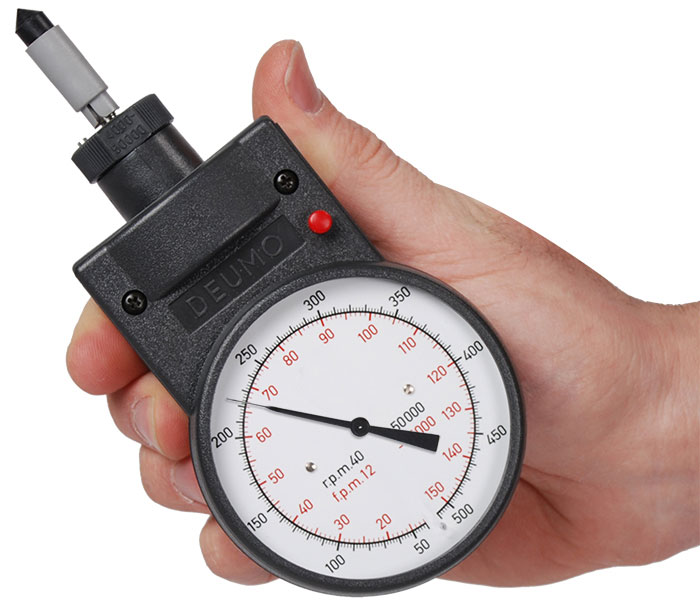Leading Reasons Every Driver Demands a High-Quality Tachometer
Leading Reasons Every Driver Demands a High-Quality Tachometer
Blog Article
The Importance of a Tachometer in Checking Engine Speed and Efficiency in Automotive Applications
In the world of vehicle engineering, the tachometer stands as a critical instrument in the motorist's arsenal, providing a straight window into the inner operations of an automobile's engine. Beyond its function as a plain gauge of changes per minute (RPM), the tachometer serves as an important device for enthusiasts and specialists alike, offering real-time insights right into engine performance and wellness.
Relevance of Checking Engine RPM
Keeping track of engine RPM, or transformations per min, is an essential facet of vehicle maintenance and performance examination. Engine RPM directly associates with the rate at which the engine's crankshaft revolves, suggesting exactly how quickly the engine is running - tachometer. By keeping an eye on RPM, auto mechanics can assess the health of the engine, detect possible problems, and fine-tune performance. An uncommon RPM reading might signify issues such as engine misfires, defective ignition system, or concerns with the gas delivery system. Continually high RPM analyses can indicate hostile driving practices or the need for a higher equipment change to boost fuel effectiveness.
Additionally, monitoring engine RPM is important for efficiency assessment in auto racing and high-performance automobiles. Maintaining optimum RPM degrees is critical for accomplishing peak power output and velocity. Racers typically use tachometers to guarantee they are operating within the perfect RPM variety for optimum performance. In summary, checking engine RPM is not only important for discovering concerns yet also for enhancing engine performance in numerous auto applications.

Benefits of Real-Time Data
In vehicle applications, real-time data plays an essential duty in supplying instantaneous insights right into the performance and problem of the vehicle. By constantly keeping an eye on different parameters such as engine speed, temperature, fuel usage, and extra, real-time data provides various advantages that add to improved effectiveness and safety when driving.
Furthermore, real-time information helps with efficiency optimization by giving immediate responses on driving practices and engine efficiency. Drivers can change their behavior in real-time based on this information to accomplish better fuel economic climate and extend the lifespan of their automobile.

Furthermore, real-time information plays an important function in modern automotive diagnostics, enabling service technicians to swiftly identify and address breakdowns. This causes minimized downtime, lower maintenance prices, and ultimately, improved overall lorry more integrity and durability (tachometer). By using the power of real-time information, vehicle stakeholders can make informed decisions that positively impact both the performance and long life of the automobile
Influence On Equipment Shifts
The tachometer plays a critical function in maximizing gear shifts by supplying real-time engine rate data to the motorist. When coming close to the redline on the tachometer, it signifies the vehicle driver to upshift to stop over-revving the engine and causing potential damages.
Additionally, the tachometer help in accomplishing smoother equipment changes, particularly in hands-on transmissions. By checking engine rate, vehicle drivers can perform gear shifts at the optimum RPM array, lowering snagging motions and lessening endure the transmission elements. This accuracy on duty adjustments not only enhances driving comfort but additionally adds to fuel performance.
Enhancing Fuel Performance
Given the important duty the tachometer plays in enhancing equipment changes for performance and engine health, it directly adds to maximizing fuel efficiency in vehicle applications. By giving real-time comments on engine rate, the tachometer helps motorists in maintaining the most reliable RPM range for fuel economic climate. When motorists consistently keep track of the tachometer and change their driving behaviors as necessary, they can avoid unnecessary fuel consumption brought on by over-revving or carrying the engine.
Moreover, the tachometer helps vehicle drivers identify the most fuel-efficient equipment to be in at any type of provided moment, preventing the engine from functioning more challenging than essential. In final thought, like it the tachometer offers as a useful device in improving gas effectiveness by advertising optimum driving habits and determining areas for enhancement in the car's efficiency.

Optimizing Engine Durability
The tachometer's role in keeping an eye on engine rate and performance is instrumental in making certain the long life of vehicle engines. Monitoring the tachometer enables motorists to remain within the advised RPM array for their vehicle, avoiding unneeded stress on the engine and extending its life expectancy.

Conclusion
In verdict, the tachometer plays an essential duty in keeping track of engine rate and performance go to the website in auto applications. By giving real-time information on RPM, it permits reliable equipment changes, enhanced gas effectiveness, and taken full advantage of engine durability. This tool is essential for keeping optimum engine efficiency and ensuring the general capability of a lorry.
Report this page